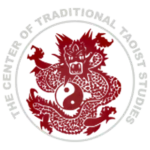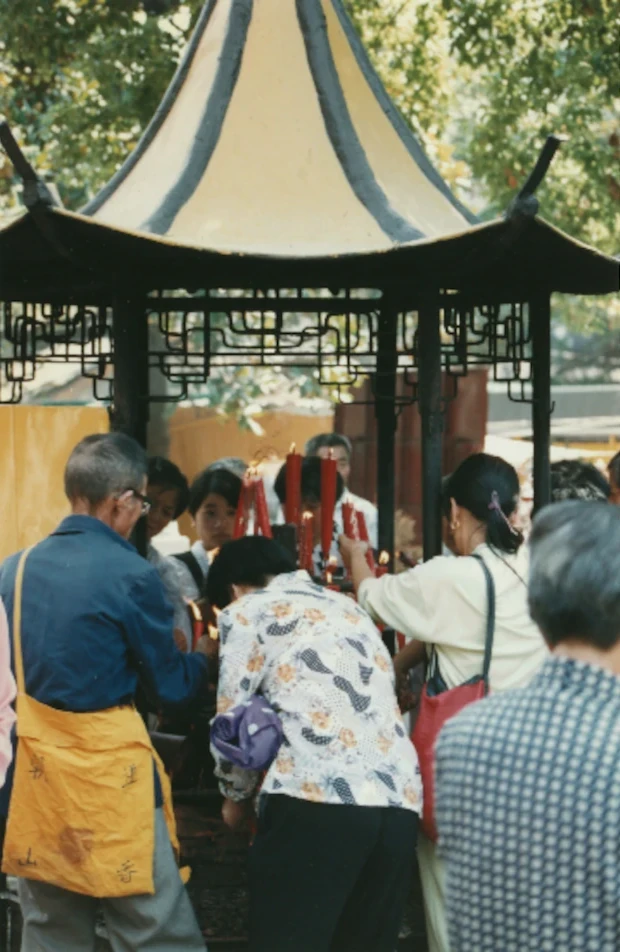Theology
Do not develop the nature which is of man, but develop the nature which is of God.
– Chuang Tzu
While the Center of Traditional Taoist Studies teaches the grounded applications of physical Chi Quong and meditation, it is important to understand that the temple is first and foremost a holy place, the Temple of Original Simplicity. If a congregation member wished to only improve his physique, he should go to a health club; if he only wished to only learn philosophy, he should go to college. The core of the temple is the religion of the Tao. Accordingly religion permeates all that is taught… it can’t be separated out.
Spread throughout the temple are religious icons that serve as reminders of Taoism’s core principles. For example, the yin-yang symbol is frequently displayed to remind students that duality binds all natural phenomena: light with dark, action with inaction, and life with death. Similarly, swords and weapons throughout the temple remind all visitors that life is a struggle, a fundamental premise underlying Taoism’s prescription to successfully deal with daily challenges.
Most prominent, however, are images of Taoist gods, representing a specific principle or an important life lesson. The God of Health, for example, reminds the congregation of the importance of maintaining the physical body, the house of the soul.
The Center of Traditional Taoist Studies teaches classical Taoist theology based on a holistic view of the universe with religious tenets underlying a system of practical concepts. Whereas Western philosophies and religions have generally viewed reason and faith as mutually exclusive, classical Taoism integrates the two. This is a consequence of recognizing that the forces of the Tao act upon the heavens as well as the earth, making the two indivisibly coupled and thus clarifying, not complicating, understanding. Such a grounded attitude can be traced to Taoism’s shamanistic origins with religious practices born of a time when concrete goals were essential amongst simple peoples trying to survive in a harsh environment.
Taoism’s religious practices build a bridge between one’s earthly human form and the heavens. In the quest for oneness with the universe, Taoists work to understand their paths — which ultimately lead to the Great Ultimate. Prayer, as performed at the Center, opens a two-way communication channel to the heavens. In this way, a devout Taoist sends an appropriate message to the Great Ultimate and receives a concrete answer in return; guidance from the Heavens augment spiritual instruction to clarify one’s path.
To the classical Taoist, life is an on-going effort to unscramble the confusions of the soul. Taoist philosophy provides principles to live by, and guidance from the gods helps see reality more clearly. This not only yields a better daily life, but also points to Taoism’s purpose of life: our soul is placed on earth for a short time to better tune itself to mortal reality. If successful, when the body is cast off, the surviving entity, the soul, is more likely to be accepted by the Great Ultimate. Thus, the duality of existence means that a better life on earth provides for a better afterlife. Significantly, there is no required sacrifice of one for the other, the two existences are complimentary and inextricably bound.

